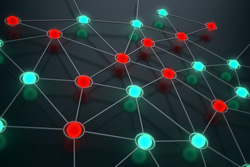The mystery of unitary dual spaces
A topological group is a mathematical object with an algebraic structure that allows for algebraic operations in the study of continuous symmetries, convergence and connectedness. Locally compact groups have many unitary representations where regular or quasi-regular representations come about as spaces of function rather than being affected by group action. Written as direct integrals of irreducible representations, the space of these representations is the unitary dual of the group. However, this space remains a complete mystery. The 'Random walks on groups and representation theory' (UB07) project is investigating the unitary dual of locally compact groups by breaking them up into large 'pieces' to study the mutual relations among them. Specifically, the EU-funded project is relying on random walk theory to study those pieces termed generalised principal series. Random walks provides spaces with certain properties that allow for observation of the behaviours of related processes. Enabling this effort, researchers have proposed a certain formula that will link the random walk with corresponding representations. Team members have to date succeeded in proving their hypotheses. The most important of these was their conjecture that the generalised principle series representations are irreducible. Their successful proofs relate to cases in which the particular group is the fundamental group of a negatively curved topological space or manifold. In ongoing work, project partners are directing efforts to extend already obtained results above to the wider class of hyperbolic groups.







